Etsy Print On Demand: How to Sell and Tips
The online marketplace Etsy is an increasingly popular forum for vendors to market and sell their goods. Print On Demand, which can contain everything from t-shirts, mugs, and phone cases to wall art, stickers, and greeting cards, is one of Etsy’s most well-liked product categories.

You may upload your designs and artwork to Etsy’s Print On Demand services, and Etsy will take care of printing, packaging, and shipping your products to your consumers. This frees you up to concentrate on developing and marketing your items rather than worrying about the price of manufacturing, delivering, and storing them.
On Etsy, sellers may reach a larger audience, produce various products, and lower the risk of unsold inventory by using the etsy print on demand strategy. In addition to being ecologically sustainable, this business strategy also results in less waste and overproduction.
With Roketfy you can discover great Print on Demand products for sale on Etsy. Start now for free!
What Is Etsy Print on Demand?
Using the business strategy known as “Print on Demand,” entrepreneurs and companies may design and market unique products without keeping stock or spending money on manufacturing tools. Print on demand etsy limits manufacturing when customers place orders, lowering the possibility of excess production, waste, and unsold inventory.
Print on demand products can range from t-shirts to sweatshirts, phone covers, wall art, novels, etc. A print on demand product is made when a seller creates or sources the item, and then collaborates with a POD provider to take care of printing, production, and client delivery.
With no minimum order restrictions, POD providers make it simple to manufacture customized products using digital printing technology. Print on demand Etsy has gained popularity in recent years, allowing companies of all kinds to provide a more extensive range of goods and designs and lowering entry hurdles for business owners wishing to launch their ventures.
What to Consider When Selling Print On Demand Products on Etsy?
You ought to pick a product with a sizable market demand and about which you are passionate. While choosing a product to sell on Etsy, don’t forget to consider the following crucial factors:
1) Identify Your Niche
Finding your specialty should be one of your priorities when choosing a product to sell on Etsy. Your area of specialization or skill is known as your niche. Anything from knitting to jewelry-making, painting to woodworking is possible. Selecting a niche will enable you to concentrate your efforts and provide goods tailored to a specific market.
Take into account your passions and skills when choosing a niche. What do you excel at? What do you like to do? What motivates you? By asking yourself these questions, you can locate a niche and a product you’re enthusiastic about.
2) Research the Competition
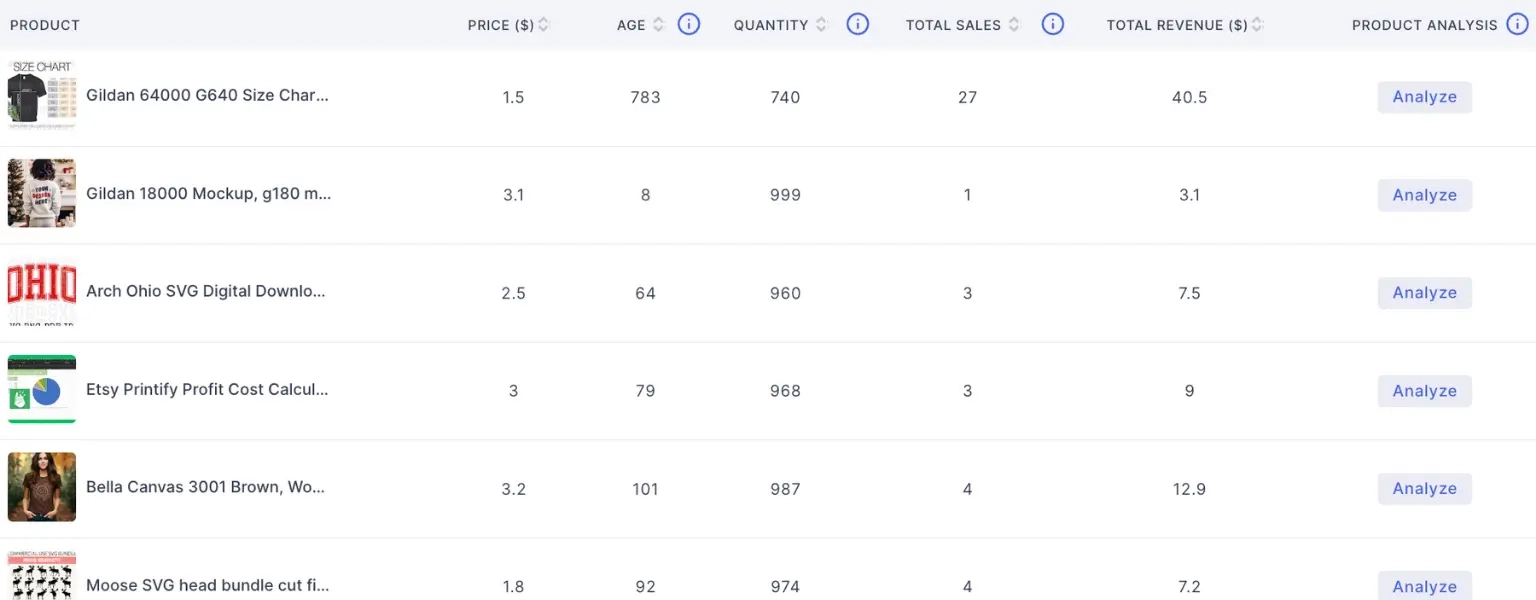
Once you’ve determined your specialty, doing some competitive research is critical. Please look at other print on demand Etsy sellers selling comparable goods to see what they are doing. What do they cost? What sort of goods do they sell? How do they promote their goods? Explore with Roketfy Product Research!
This research will aid your understanding of the market and the opportunities to outperform the competition. Also, it will enable you to decide whether your product is distinctive enough to stand out.
3) Consider the Cost of Materials and Time
It’s critical to consider the cost of materials and effort when choosing a product to sell on Etsy. To turn a profit and pay your expenses, you must make sure that your product prices are acceptable.
Investigate the cost of the components and consider how long it takes to produce the item. Consider overhead expenses like print on demand for Etsy fees, materials for packaging, and shipping charges. Setting competitive and profitable pricing is possible once the product’s manufacturing costs have been established.
4) Choose a Product That Fits Your Brand

On Etsy, your brand serves as your identification. Customers will associate you with it and use it to set you apart from competitors. Make sure the item you choose to sell on Etsy fits your brand. Your product should showcase your taste, aesthetic, and principles.
Consider your brand’s narrative and how you want your items to convey it. Your brand and your values should be reflected in your goods.
5) Create Products With High Demand
Demand should be considered when choosing a product to sell on Etsy. It’s crucial to design goods that consumers desire to purchase. Look at current trends and Etsy’s top sellers. Search for things that are popular and frequently searched for.
To chase trends, though, keep your niche and brand. A well-liked product can always be given a special touch to make it your own.
6) Designing Your Product
The next stage is to design your product when you’ve decided. You can create your design or hire a freelancer to do it for you. Make sure your design is distinctive and captivating to draw in customers. Moreover, make sure your design is print-ready and of good quality. Keep reading the following tips to get more advice on creating a product that will sell well on Etsy.
7) Design With Quality in Mind
Prioritizing quality is one of the essential components of designing a product for Etsy. Consumers on Etsy want high-quality products, so make sure yours is sturdy and well-made. Pay close attention to the supplies you employ and the production procedure. If you do anything by hand, take your time and pay attention to the details.
8) Make Your Product Stand Out
If you want to sell anything on Etsy, your product needs to be unique compared to the competitors. Search for ways to distinguish and draw attention to your goods. This may be accomplished through color, texture, or design components. To further personalize and distinguish your goods, think about providing customization choices.
9) Pricing Your Goods Affordably
For your goods to be successful on Etsy, you must price them competitively. Investigating what other vendors charge for comparable goods ensures your pricing point aligns with what the market is willing to pay. While you don’t want to overcharge for your goods, you also want to ensure buyers can afford them.
10) Optimize Your Product Listings
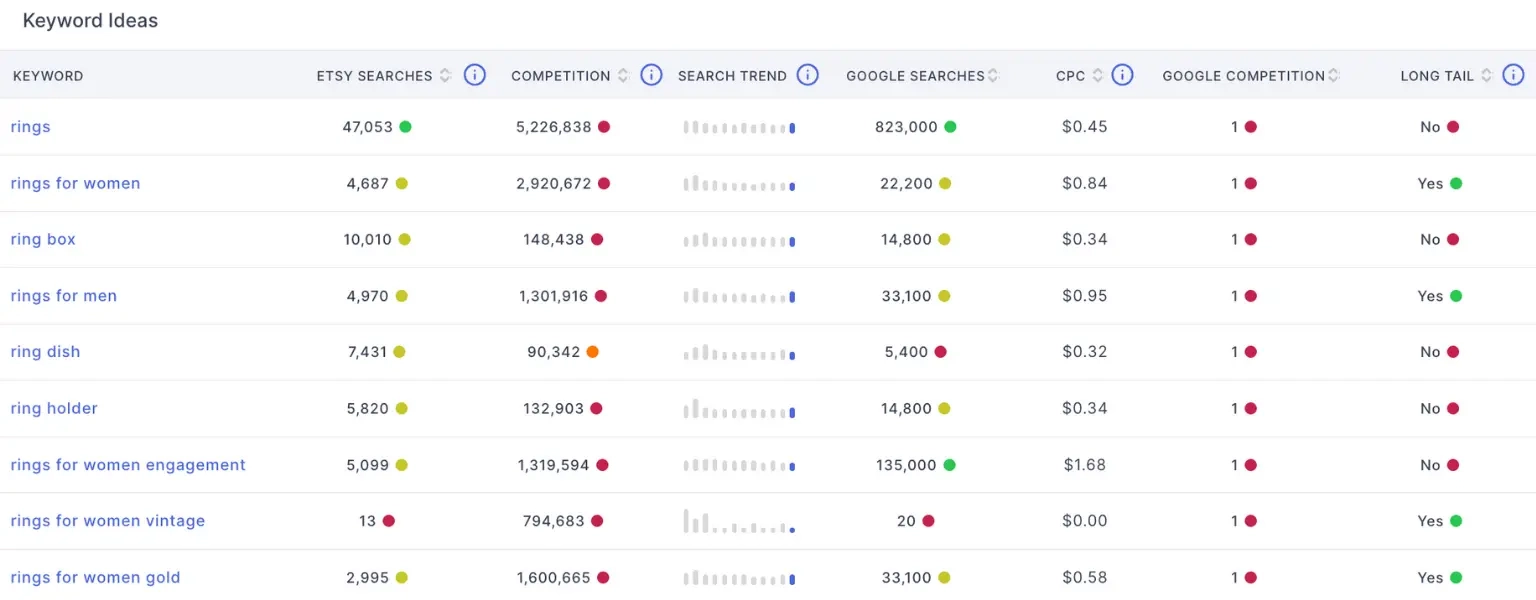
If you want to sell anything on Etsy, your product needs to be unique compared to the competitors. Search for ways to distinguish and draw attention to your goods. This may be accomplished through color, texture, or design components. To further personalize and distinguish your goods, think about providing customization choices. In short, you need to improve your Etsy SEO situation.
Let’s Start Selling Print On Demand Products on Etsy: Step by Step
You must create an Etsy shop to sell anything there. You only have to pay a listing fee when listing goods on Etsy; opening an account is free. Create an account, select a shop name, and finish the shop profile to set up an Etsy store. The following is the best advice for starting and running a successful Etsy shop.
Step 1: Research Etsy’s Policies and Fees
Understanding Etsy’s rules and costs is crucial when opening an Etsy business. Spend some time reading the Etsy Seller Manual, which offers advice on everything from marketing and customer service to shipping and taxes. The best course of action would be to become familiar with Roketfy's Etsy Fee Calculator, which include a listing fee, transaction fee, payment processing fee and more.
Step 2: Sign Up for an Etsy Account

Creating an Etsy account is the first step in setting up your shop on the website. Go to the Etsy website and select “Sell on Etsy” from the menu in the upper right. Enter your name, email address, and password to create an account when prompted.
Step 3: Choose a Shop Name
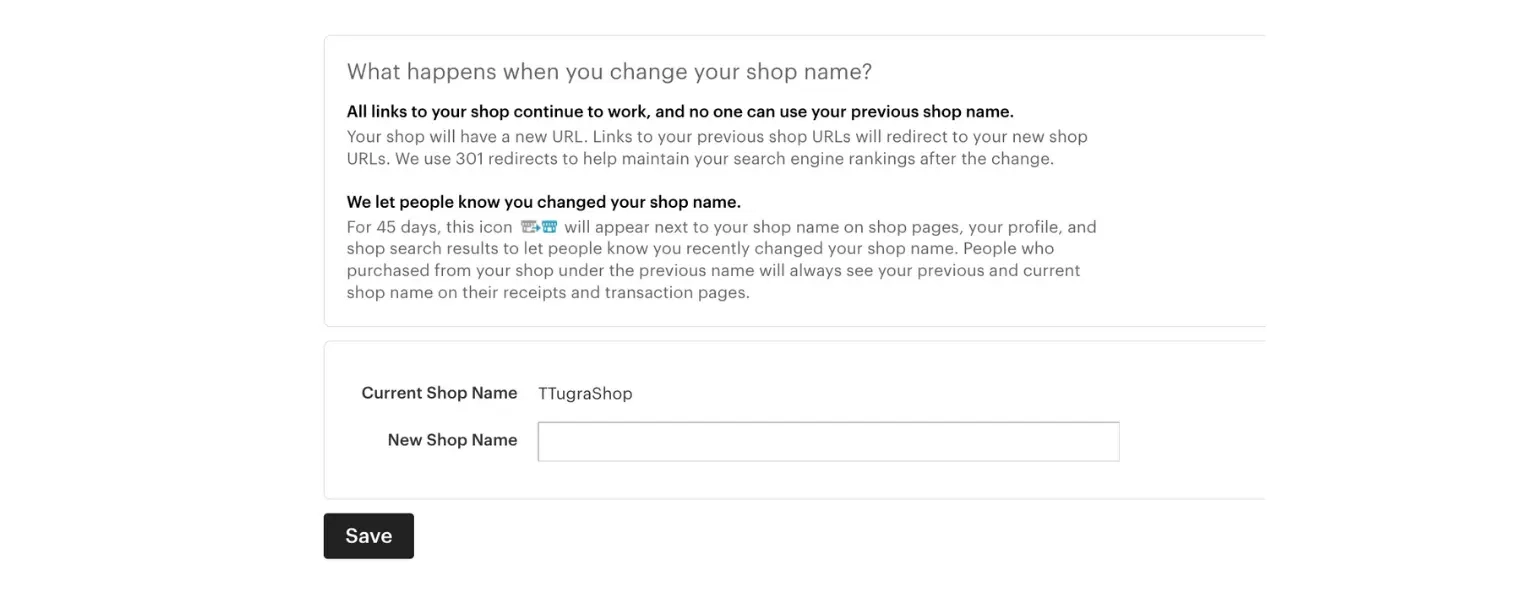
Choosing a shop name after creating your Etsy account would be best. Your store’s name should be distinctive, memorable, and associated with your goods. Choose a name that accurately describes the aesthetic of your goods, your name, or your company’s name.
Step 4: Create Your Shop Policies
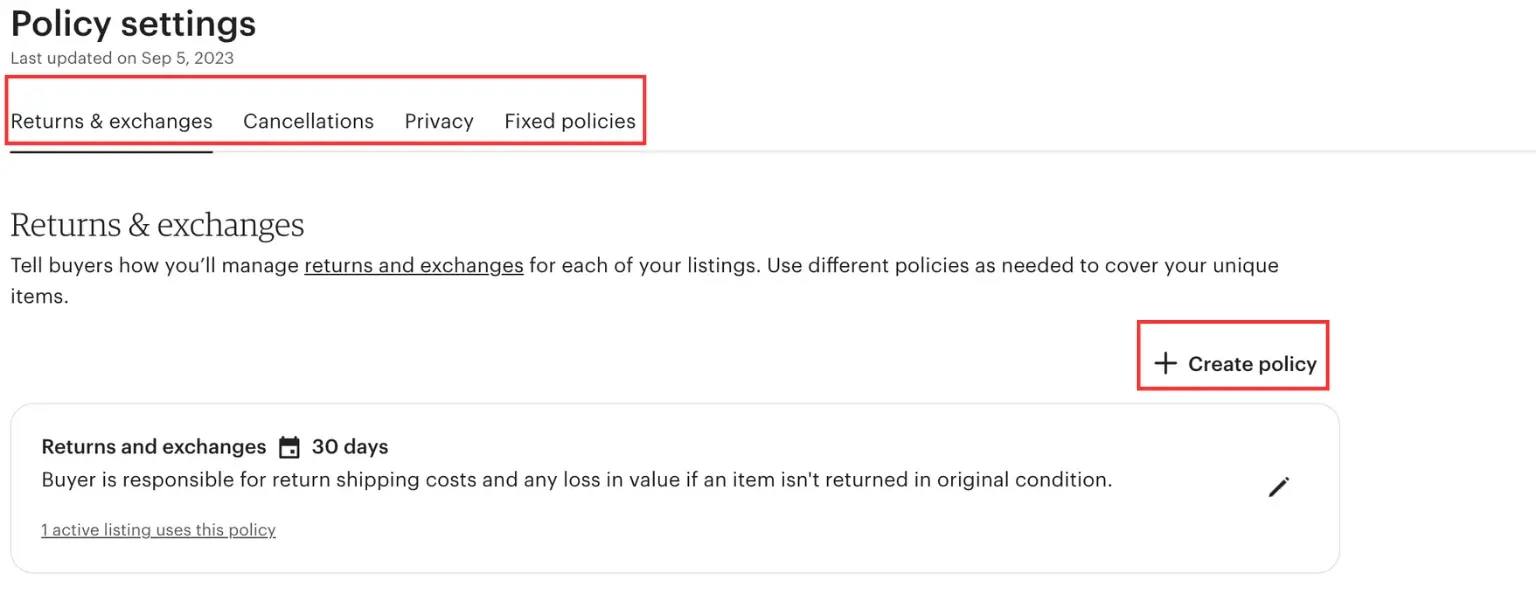
You must establish your shop policies before adding your products. Provide details about shipping, refunds, and exchanges in your shop policies. Customers can better grasp what to expect when they shop at your store with the help of this information. On your Etsy dashboard, the “Settings” page contains the section for shop policies.
Step 5: Add Your Products
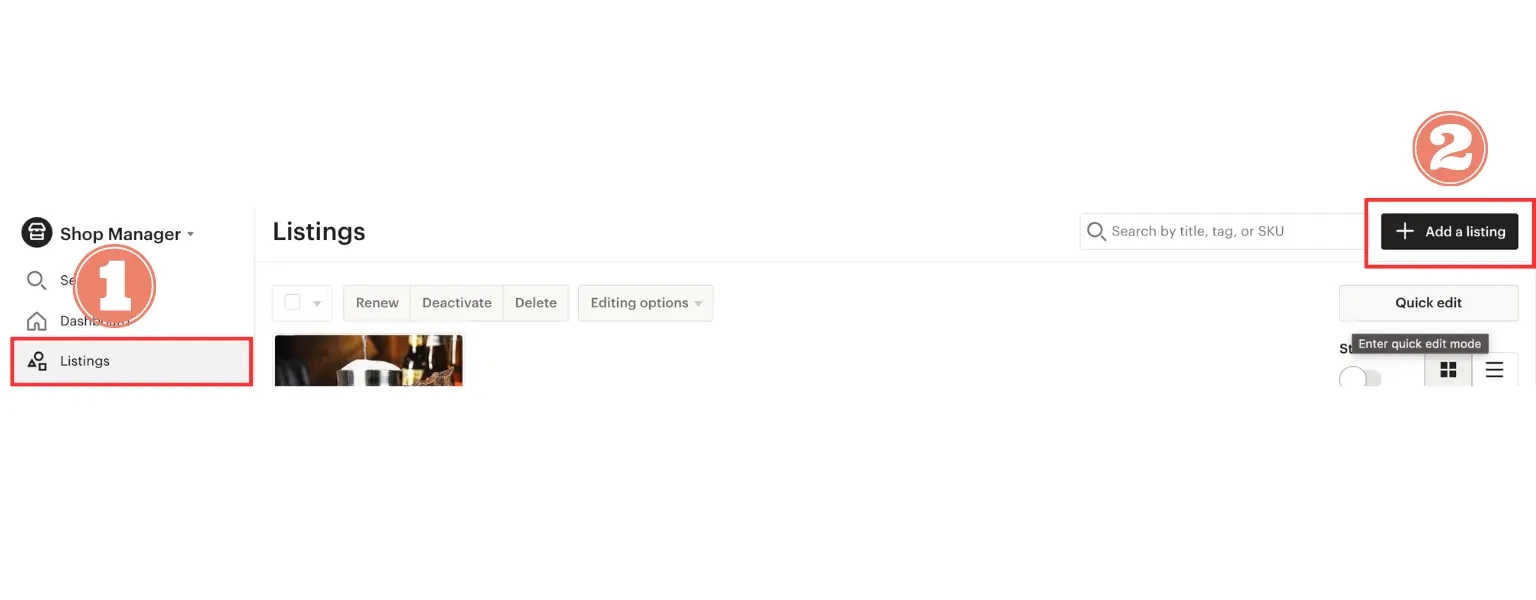
It’s now time to include your products in your store. In your Etsy dashboard, click the “List a new item” button and provide the necessary details for your goods. This covers the title, summary, cost, and pictures. You can also add tags to make your product more straightforward for customers to find.
Step 6: Set Up Payment and Shipping Options
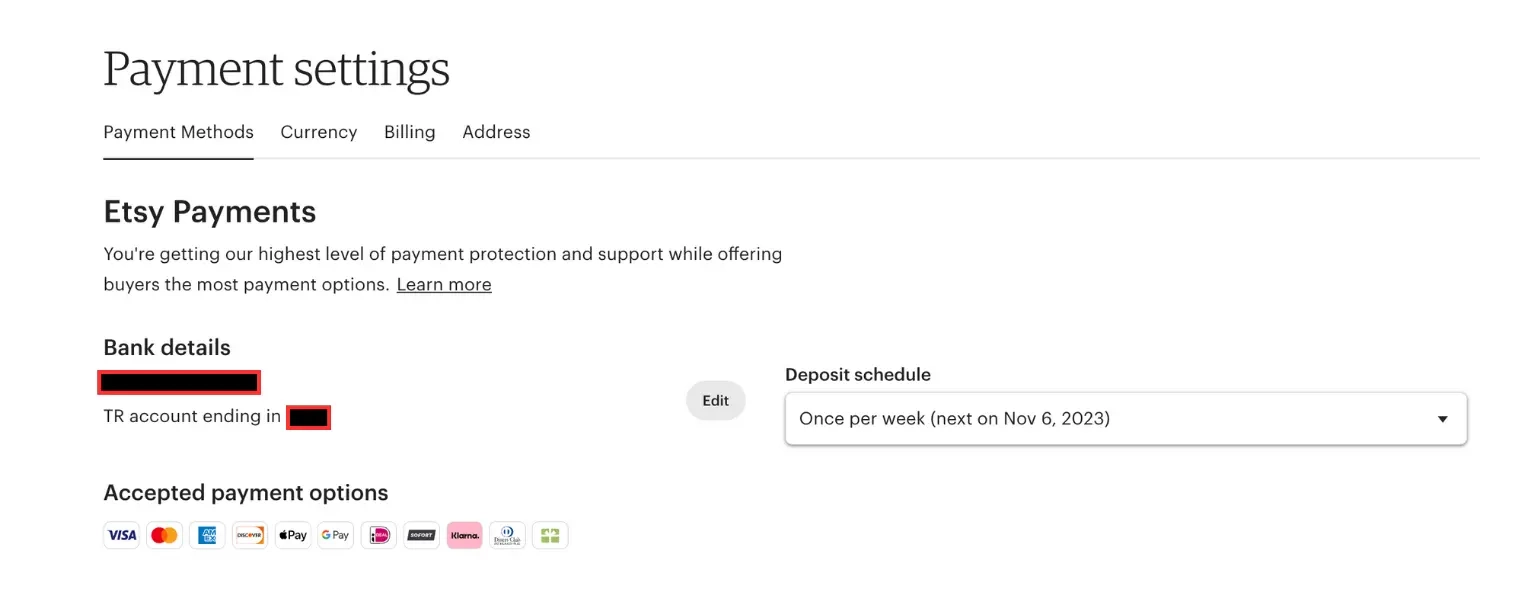
You must configure payment and shipping options before selling on Etsy. Credit cards, PayPal, and Etsy Payments are just a few payment methods on the website. Also, you can select the best shipment alternatives that suit your needs, such as shipping rates, shipping profiles, and shipping labels.
Step 7: Optimize Your Shop
To get customers to your store, you must optimize it for search engines. Include relevant keywords in the titles and descriptions of your products and your shop’s name. You can also add a shop banner and profile picture to make your shop stand out. Start optimizing your Etsy shop with Roketfy sooner rather than later!
Step 8: Promote Your Shop
To get customers, you must advertise your store. Social networking, email marketing, and advertising can all be used for this. Etsy also provides a range of marketing tools, including Promoted Listings and Etsy Advertising, to assist you in reaching more buyers.
You can draw clients and develop a successful online business selling your handmade or one-of-a-kind products by following the preceding instructions and setting up a high-quality shop. To ensure the success of your Etsy store, keep your attention on quality, client relations, and marketing.
Marketing a Print On Demand Product on Etsy
When it comes to selling on Etsy, marketing is vital. To draw clients, you must advertise your product. On Etsy, you can promote your product in a variety of methods, such as:
• Social media marketing: You can advertise your goods through social media sites like Facebook, Instagram, and Twitter. Post pictures and links to your Etsy store on social media.
• Etsy Ads: Etsy provides a platform for advertising that enables you to advertise your product to a larger audience. You can decide on an advertising budget and only pay when someone clicks on your advertisement.
• Etsy SEO Optimization: SEO (search engine optimization) is crucial for your Etsy shop to appear higher on search engines like Google, SEO (search engine optimization) is crucial. Make sure the keywords in your product listing are pertinent.
Managing Your Orders to Sell on Etsy
The key to managing your orders has a successful Etsy store. To guarantee that your consumers receive their goods promptly and in good condition, you must be organized and effective once your shop begins to receive orders. Keeping track of your orders in one place, such as a spreadsheet or order management software, is the first step in handling them. This will make it easier for you to track order information, such as customer details, shipping addresses, and order status.
Keep in regular contact with your clients, giving them updates on the status of their orders and responding to any queries they might have. Proper packaging and fast shipment are critical to guarantee that your products arrive in good shape and on schedule. You can deliver a satisfying client experience and establish a reputation for dependability and quality on Etsy by efficiently handling your orders.
Choosing a Print On Demand Supplier on Etsy
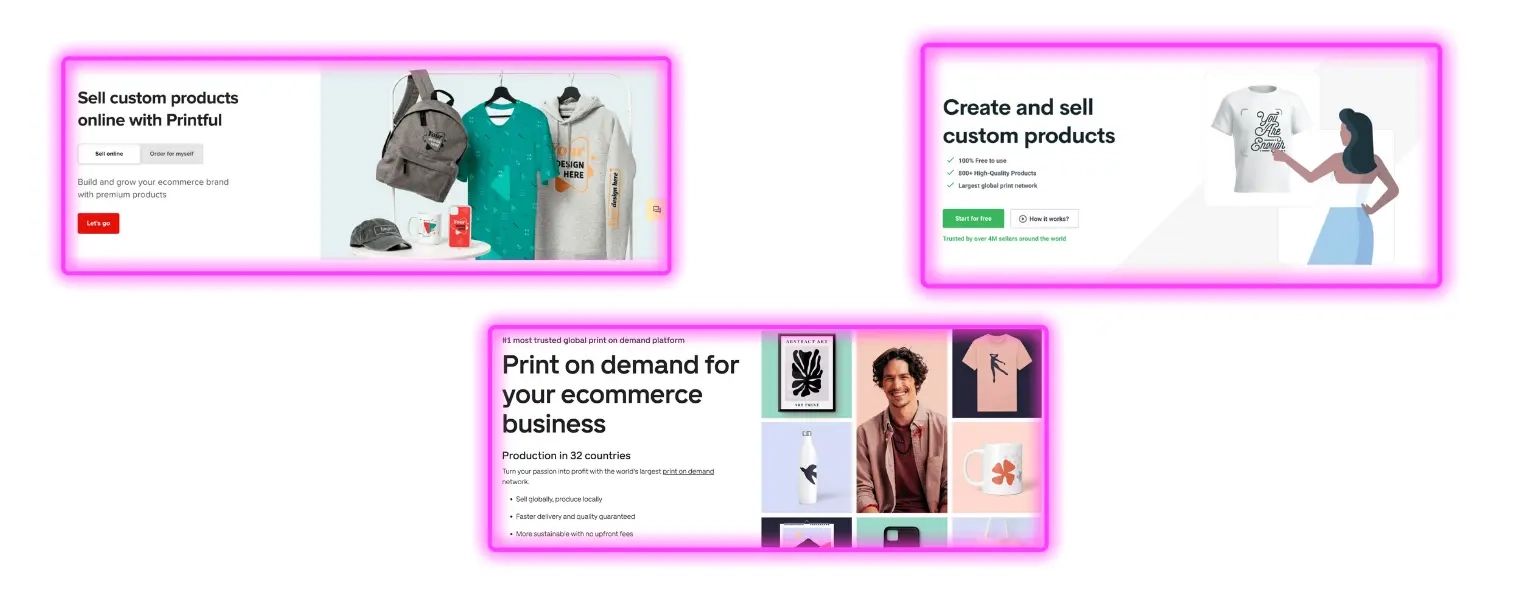
The production and distribution of books, magazines, and other printed goods can be done quickly and affordably with the help of print-on-demand companies. By working with a POD provider, authors and publishers can save money by only printing the number of copies of a book they need.
It can be challenging to choose a POD supplier because there are so many of them. The following are some essentials to think about before selecting a POD supplier.
Quality of Printing
When choosing a POD supplier, printing quality is a crucial factor. To ensure that readers take the printed material seriously, it must appear expert and of excellent quality. Choose a POD vendor who has a reputation for generating prints of exceptional quality and who uses high-quality printers and paper. You can also request a sample of their printed goods to assess your qualifications.
Turnaround Time
The turnaround time of a POD supplier should be taken into account as well. If you have a deadline, you want a POD supplier who can print and distribute your goods swiftly. When placing an order, inquire about their manufacturing and delivery schedules. Some providers charge extra for fast shipping choices if you need your products as fast as possible.
Pricing
The cost should also be taken into account while selecting a POD supplier. Comparing rates and picking a printer that meets your budget is crucial because printing costs might vary significantly between suppliers. But keep in mind that occasionally the least expensive choice is the best. Cheaper POD providers could utilize worse materials or require more time for a turnaround. The ideal POD provider would strike a balance between cost and value.
Customer Service
When working with a POD supplier, exceptional customer service is essential. You want an accommodating and responsive provider when you have queries or issues. Choose a POD vendor who has a responsive, committed customer support team. Verify their availability to respond to customer questions and their response time.
Distribution Network
The distribution network of a POD supplier is another crucial aspect to consider. A provider with a wide-ranging distribution network, numerous print facilities, and shipping choices is ideal. You may reach more customers and save money on shipping by working with a supplier who has an extensive distribution network.
Options for Print-On-Demand
Next, take into account the variety of print-on-demand choices a supplier provides. While some POD vendors only print certain materials, like paperback books, others can print various things, such as hardcover books, magazines, and calendars. Make sure the supplier you select can handle your unique printing requirements.
The success of your publishing project depends on your choice of POD partner. Considering the aspects mentioned earlier, you can select a supplier meeting your printing requirements, budget, and deadline. When choosing a provider, it is crucial to research and compare them to make the best option possible.
There are many POD vendors available in the market, such as Roketfy. When choosing one of these vendors, properly examine them since each has advantages and disadvantages. A supplier who provides outstanding quality, customer service, and a strong distribution network are worth spending a bit more on, so remember that there are better options than the cheapest.
Wrapping Up
If done correctly, selling a POD product on Etsy can be profitable. You must pick a product with a strong market demand that you are enthusiastic about. When selling a print on demand product on Etsy, you must take the following steps:
- Designing your product
- Setting up your Etsy shop
- Listing your product
- Marketing your product
- Handling your orders
- Selecting a trustworthy POD provider
These techniques can help you launch a profitable POD company and succeed on Etsy.




